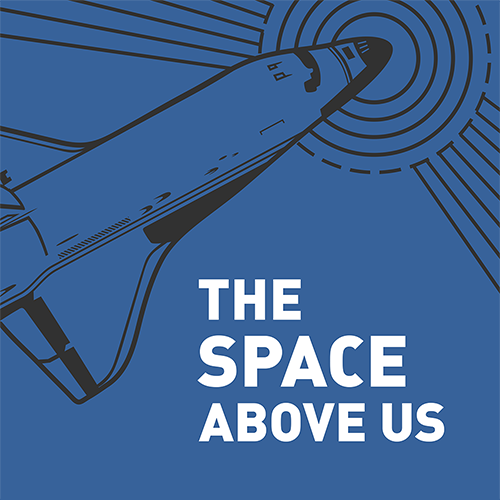Episode 140: STS-66 - Ascending with Atlantis (ATLAS-3)
Table of Contents
On STS-66 we welcome Atlantis back from its long maintenance period, further probe the upper atmosphere, test out a new rendezvous technique, and discover what is perhaps the worst payload name of all time.
Episode Audio #
Photos #
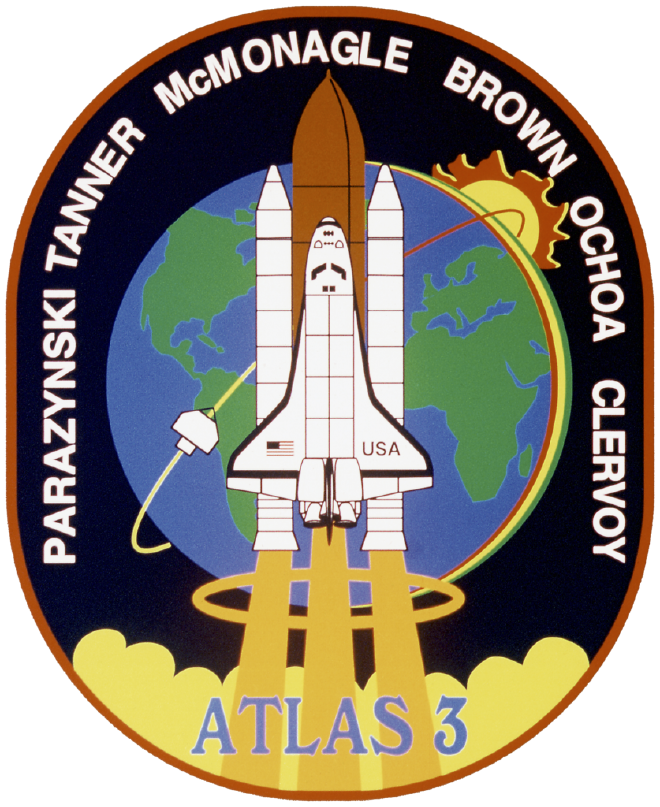
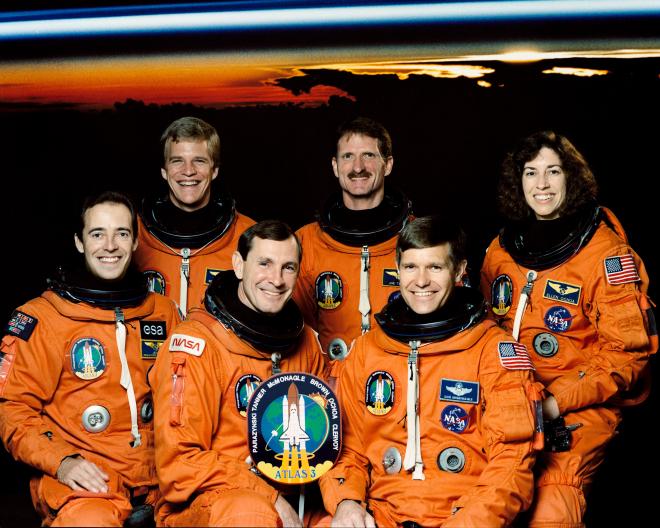
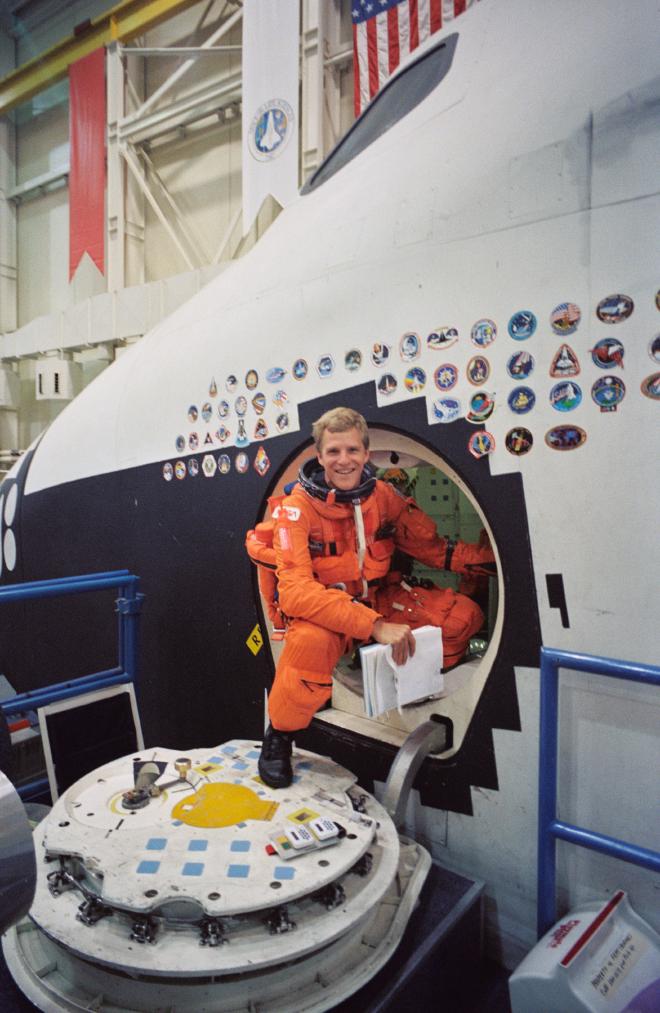
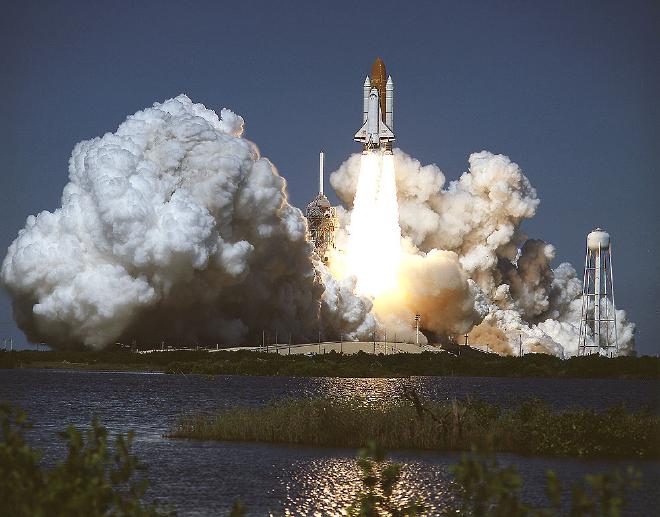
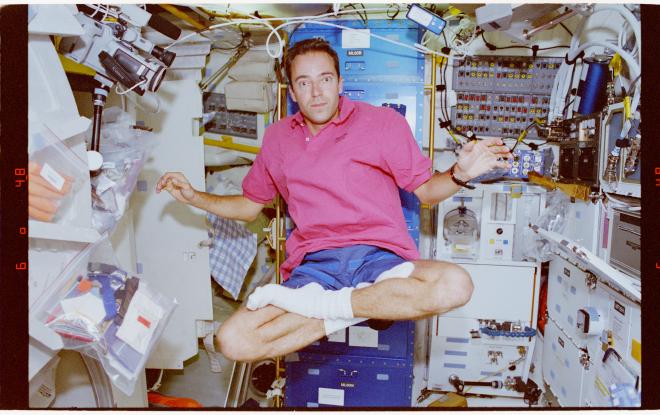
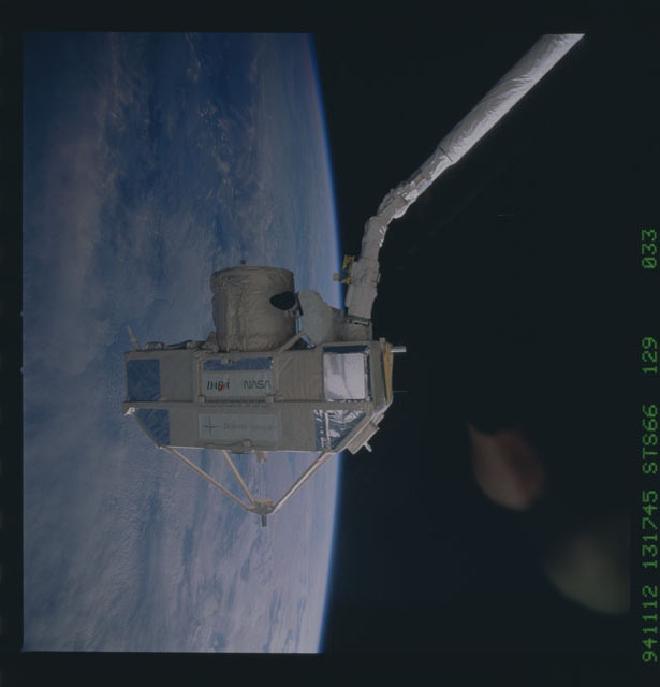
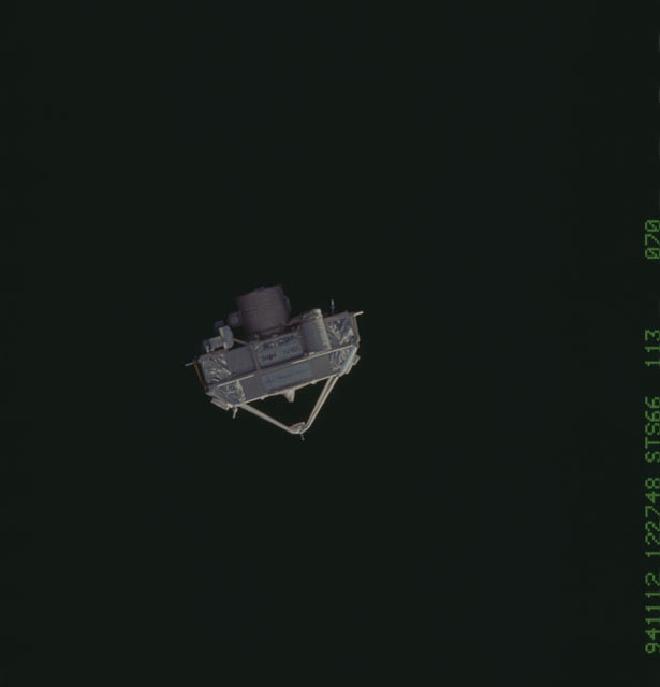
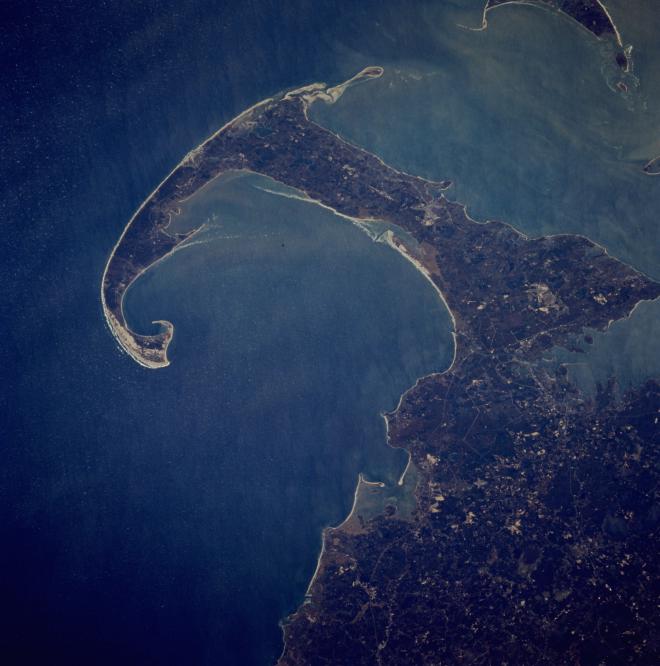
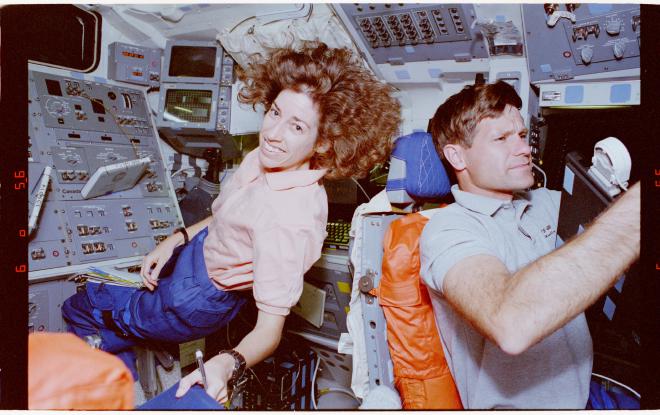
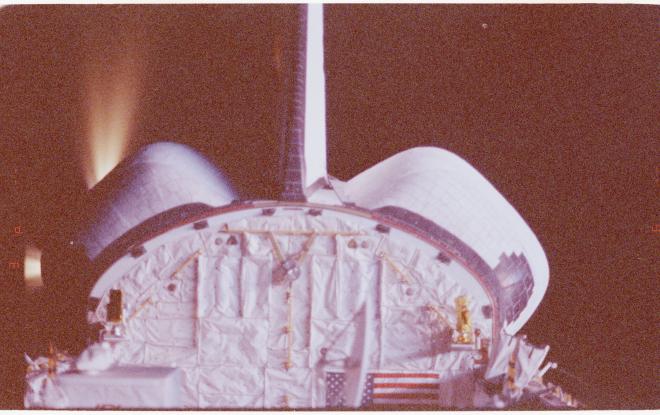
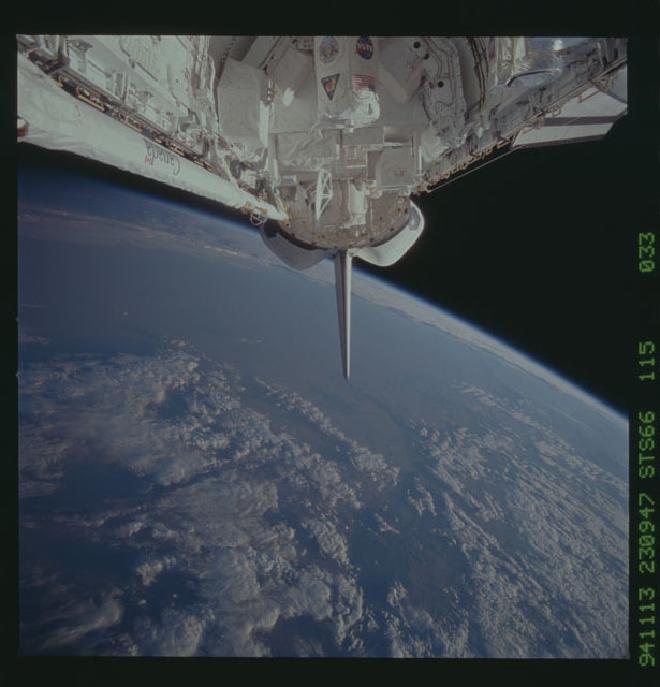
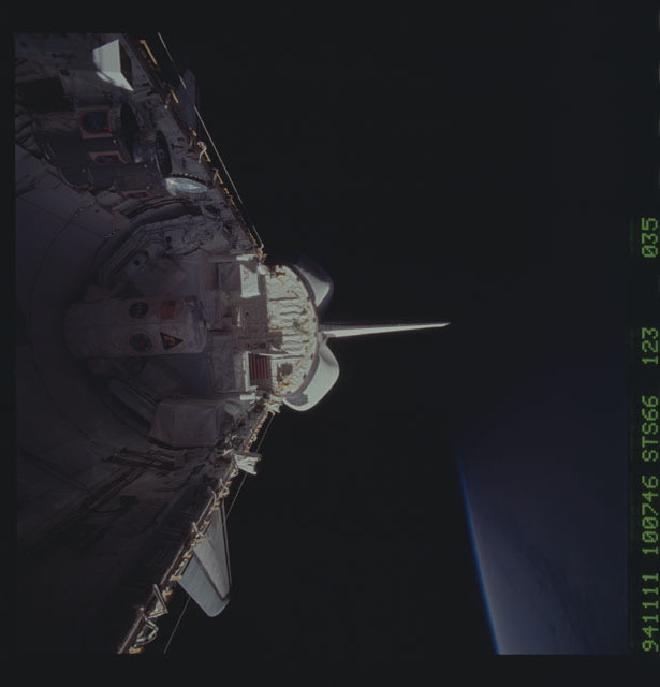
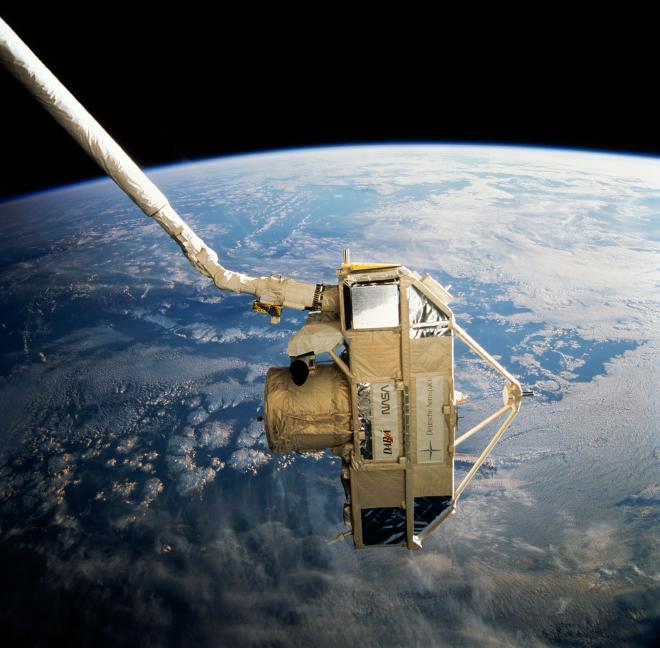
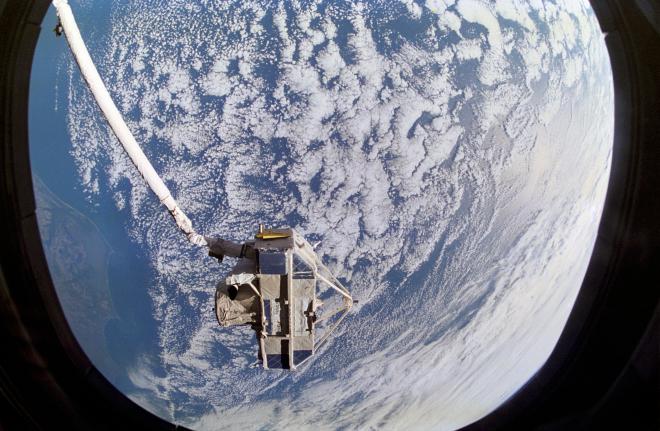
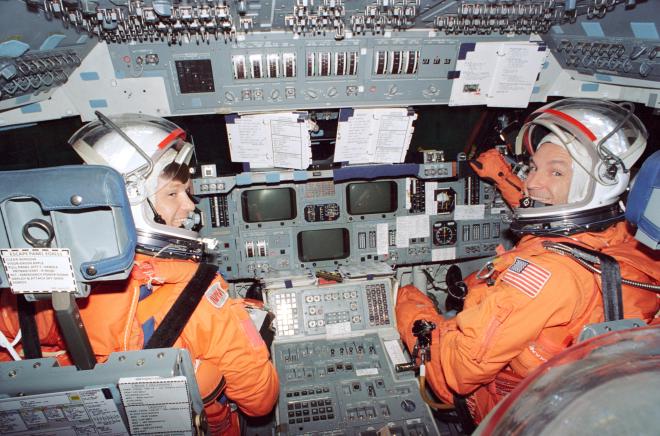
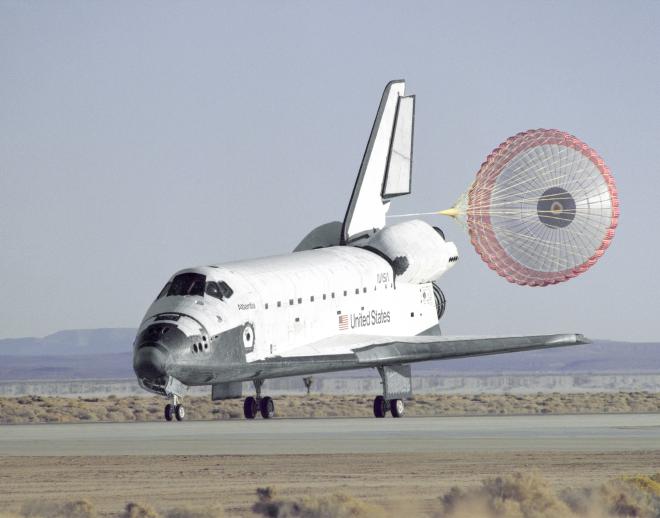
For more photos, head over to our friends at Wikiarchives.space: https://wikiarchives.space/index.php?/category/862
Post-Flight Presentation #
If you’d like to see the mission in motion you can check out the post-flight presentation here:
Mission Highlights Resource Tape #
Ever wanted to watch almost an hour of B-roll from STS-63? Well now’s your chance!
Transcript #
NOTE: This transcript was made by me just copying and pasting the script that I read to make the podcast. I often tweak the phrasing on the fly and then forget to update the script, so this is not guaranteed to align perfectly with the episode audio, but it should be pretty close. Also, since these are really only intended to be read by myself, I might use some funky punctuation to help remind myself how I want a sentence to flow, so don’t look to these as a grammar reference. If you notice any egregious transcription errors or notes to myself that I neglected to remove, feel free to let me know and I’ll fix it.
Hello, and welcome to The Space Above Us. Episode 140, Space Shuttle flight 66, STS-66: Ascending with Atlantis
Last time, we wondered whether it was the same cat as we experienced deja vu at 28,000 kilometers per hour. STS-68 may have flown the same primary payloads on the same orbiter, and even with one of the same crew members as STS-59, but it yielded all new data thanks to some clever scientific techniques and some careful orbit management. Today’s flight will also see a familiar primary payload collecting scientific data, but we’ll also see some new tricks being tested with an eye on a rapidly approaching future.
Rather than dawdle on the ground, let’s just jump right into things and learn what our payloads are once we hit orbit. But first, let’s meet the crew.
Commanding the mission was Don McMonagle. We first met McMonagle as the Pilot on STS-39, and then again on STS-54, helping to deploy TDRS-F. With this, this third and final flight, he moves over to the seat on the left along with all the responsibility that comes with it.
Joining McMonagle at the front of the flight deck is today’s Pilot, Curt Brown, flying for the second time. We first met Brown a couple of years back on STS-47, the Japanese-funded Spacelab mission. We’re going to become good friends with Curt, since this is only his second of six flights.
Mission Specialist 1, and today’s payload commander, was another familiar face: Ellen Ochoa. Ochoa’s inclusion as payload commander makes a lot of sense because in addition to her many skills, she flew as a mission specialist on STS-56, the previous ATLAS mission. no word on if she would be bringing her flute this time. This was Ochoa’s second of four flights.
First of our three rookies is Mission Specialist 2, Joe Tanner. Joseph Tanner was born in Illinois in 1950, and I guess he liked it there since he earned a Bachelor’s degree in Mechanical Engineering from the University of Illinois in 1973. Tanner then joined the Navy, flying an A-7E in Light Attack Squadron 94 on the aircraft carrier USS Coral Sea. He later moved on to serve as an advanced jet instructor pilot in Pensacola, Florida. Tanner joined NASA Johnson, using the Shuttle Training Aircraft to teach the shuttle pilot crews how to safely guide the orbiter to a gentle landing on the runway. He eventually worked his way up to the Deputy Chief of Johnson’s Aircraft Operations Division, logging nearly 9000 hours of flight time. He jumped from trainer to crew member when he was selected as an astronaut in 1992 and this is his first of four flights.
Moving along to Mission Specialist 3, we find Jean-Francois Zhawn Franswah Clervoy. As you may have guessed from his name, Clervoy is a French astronaut, so I’m just gonna go ahead right now and warn any French speakers to guard your ears. Jean-Francois Clervoy was born on November 19th, 1958 in Longeville-les-Metz, in France, but grew up in Toulouse. He graduated from several institutions in France that I’m not even going to attempt to read, before becoming a flight test engineer. In 1983 he joined the French space agency and worked on autopilot systems for several different spacecraft. In 1985 he was selected in the second group of French astronauts, and actually began studying Russian and trained at Star City on Soyuz and Mir systems. Well, instead of flying to Mir, he was sent off to Houston to train as a mission specialist on the shuttle, with this being his first of three flights. And while his final spaceflight will be in 1999, he’ll stay in the space ecosystem, working on the European Automated Transfer Vehicle among other things.
And rounding out the crew, we have Mission Specialist 4, Scott Parazynski. Scott Parazynski was born on July 28th, 1961 in Little Rock, Arkansas. Parazynski’s early education was spread all around the world, thanks to his globetrotting father, who was a Boeing engineer. Parazynski attended school in Dakar Senegal, Beirut Lebanon, Tehran Iran, and Athens Greece. After that he moved on to Stanford where he earned a Bachelor’s in Biology, sticking around to earn his MD. After serving a medical internship at Brigham and Women’s Hospital in Massachusetts and then a residency in Denver, Colorado, he apparently decided to just add the entire world to his itinerary, and applied to be an astronaut. He was selected as an astronaut in 1992 and this is his first of five flights. Also, since I’ve been reading a lot about high altitude climbing lately, I have to mention that while Karl Henize was the first astronaut to attempt to climb Mt. Everest, ultimately perishing in the attempt, Scott Parazynski is the first to successfully complete the journey. If you’re thinking of following in Parazynski’s footsteps, don’t forget your extra mittens on the South Col.
With STS-66, we see the return of a friend we’ve seen 12 times already, but who has been taking a little break backstage: Space Shuttle Atlantis. All of the orbiters would regularly enter periods of extended maintenance, giving engineers and technicians an opportunity to perform fixes and enhancements that simply couldn’t fit into the regular schedule. During this downtime, Atlantis underwent upgrades that brought it in line with its sister-ships including the addition of a drag parachute and improved nose steering for use during rollout, as well as plumbing for the extended duration orbiter, which would actually never get used on this vehicle. Several sources also note that the downtime was extended to accommodate changes for the upcoming series of Shuttle-Mir flights, but I’ve been unable to track down the exact nature of those changes so I’ll just leave that as a tantalizing mystery. I believe it was mostly related to modifications to the airlock to allow for docking. Regardless of what the changes were, OV-104 was back on the launchpad for the first time in more than two years, so welcome back, Atlantis.
The parts of the countdown that were under human control proceeded smoothly, but once again the weather proved problematic, with conditions at overseas abort landing sites unacceptable for liftoff. As the minutes ticked by, the crew were surely keeping an eye on the clock, and on the fact that due to lighting constraints for the free-flying payload we’ll discuss later, today’s launch window just over an hour long. That’s a lot more forgiving than a ground-up rendezvous mission, but still. Thankfully for the crew, mission controllers, and everyone lining the Florida coastline to watch, the weather question only caused a delay of a few minutes, and Atlantis was soon cleared for launch. On November 3rd, 1994, at 11:59 and 43 seconds AM, Eastern Time, Atlantis once again felt the millions of pounds of thrust provided by its three main engines and two solid rocket boosters, and STS-66 was underway.
Rookie Scott Parazynski later recalled the launch for the Smithsonian book “Space Shuttle: The First 20 years.” He said how all the way until the final seconds of the countdown, everything seemed much like it had in the simulations. The procedures, the radio calls, and even the rumbling of the main engines at 6 seconds. But, quote:
At Solid Rocket Booster ignition, though, there was no mistaking a rocket ship for a simulator. The kick of the SRBs took us to almost two G’s instantaneously, with concomitant roar and rattling in the cabin. The four of us on the flight deck were focused on the computer screens in front of us, following the launch milestones in our procedures. But I did sneak a quick peek at a mirror strapped onto my left knee as Atlantis rolled on her back to climb to orbit. I could clearly see the waves crashing on the beach below us, and a scattered cloud deck falling behind us at an amazing speed.
End quote.
One uneventful ascent later, and the orbiter has attained an even more amazing speed and its crew found themselves in a 300 kilometer high, 57 degree inclination orbit. Time to get to work.
Now that the payload bay doors are opened up, we can take a peek out the flight deck aft windows and see what we’ve got back there. Ah, yes, smack dab in the middle is a frequent flyer we know pretty well at this point, ATLAS-3. The Atmospheric Laboratory for Applications and Sciences is, as the name implies, joining us for the third time, having previously flown on STS-45, and STS-56. The original plan had been to fly ATLAS around once a year for a total of nine or ten times, allowing scientists to collect complementary sets of data that also gave insight into how conditions changed over time. Instead, this will be its third and final flight. As always, the day to day realities of something as demanding as building the space shuttle payload manifest is surely more complex than I’ll be able to do justice to here, but a major contributor to the ATLAS series ending early seems to be the upcoming Shuttle-Mir flights. I’ll save a more detailed discussion of this until after the Shuttle-Mir program when we have more context, but the short version seems to be that with a limited number of orbiters and a limited budget leading to a limited number of flight opportunities, if you want to add a surprise series of flights to a Russian space station to the manifest, you’re going to have to make some tradeoffs. But let’s not get ahead of ourselves. What will we be doing today? Well, today in November of 1994.
The goal today is to once again deploy ATLAS’ array of carefully calibrated instruments in order to better understand the conditions of the upper atmosphere. At a high level, it looks like ATLAS-1 established a baseline and ATLAS-2, flying just over twelve months later, gave scientists insight into how the system changed year to year. With ATLAS-3, instead of flying in the Northern hemisphere’s Spring, we’re flying in the late Fall, coming up on Winter. Scientists were interested in learning how the atmosphere transitioned between the seasons, making this the perfect time of year to continue their exploration.
Since we’ve seen them twice already, I’ll only briefly remind you, but let’s take a quick look at ATLAS’ instruments. First, we’ve got ATMOS, the Atmospheric Trace Molecule Spectroscopy experiment, which is able to precisely measure the amounts of a few dozen different gases in the middle atmosphere. By flying in the Autumn time frame, ATMOS should be able to get a better sense of how gases migrate around the globe as the Northern and Southern hemispheres trade seasons. In a similar vein, the Millimeter-Wave Atmospheric Sounder will be scanning the atmosphere from 20 kilometers to 100 kilometers in altitude, seeking out water vapor, chlorine monoxide, and ozone: three gases critical to our understanding of the climate. In order to understand what’s pumping energy into the upper atmosphere in the first place, we have the Active Cavity Radiometer Irradiance Monitor, the Solar Ultraviolet Spectral Irradiance Monitor, as well as the Measurement of the Solar Constant experiments. All three of these would seek to better characterize the energy coming out of the sun, which of course is the driving source of energy for the Earth’s atmosphere. Also in the payload bay is another frequent flyer we know pretty well: the Shuttle Solar Backscatter Ultraviolet Spectrometer, or SSBUV. Whenever ATLAS has flown, so has SSBUV, and its data is definitely helpful to the same people studying the ATLAS data, but strictly speaking it’s an unrelated payload. Regardless of what payload umbrella it falls under, it would be making careful measurements of ozone levels, helping to keep long-lived satellites properly calibrated.
In addition to flying at a different time of year, ATLAS-3 would also be flying in a different part of the solar cycle than its predecessors. This regular cycle of solar activity, typically lasting around 11 years, can have a major impact on both weather in space and conditions in the upper atmosphere, so training its suite of sun-studying instruments on our closest star just as its activity was nearing its peak was yet another way ATLAS was providing valuable insight into the Earth-Sun system.
While ATLAS was started up, the remote manipulator system was put through its checkout procedures and then grappled to our next primary payload. I think ATLAS, with its numerous precise instruments is pretty fascinating, but as a flight dynamics nerd, I definitely perk up a bit when I see that we have a free-flying payload. So let’s talk about our latest excuse to talk about orbital rendezvous: CRISTA-SPAS.
The “SPAS” part we already know. The German-built Shuttle Pallet Satellite has proven to be a great tool to have in the toolbox. Much like the orbiter was a great way for scientists to fly a payload in space without having to worry about every aspect of spacecraft design and operation, SPAS was a great way for scientists to fly a free-flying payload without having to worry about all the engineering challenges that normally come with that. Once a payload is integrated with SPAS, it can handle interfacing with the shuttle, pointing where you need it to point, communicating back with the orbiter, and providing power. Flying on SPAS today were two payloads, the Cryogenic Infrared Spectrometers and Telescopes for the Atmosphere, or CRISTA, and the Middle Atmosphere High Resolution Spectrograph Investigation, or MAHRSI.
Let’s start with CRISTA. Using its special super-chilled sensor, CRISTA would be making infrared observations of trace gases in the middle and upper atmosphere. This region is notorious for being too high to study by balloon, too low to fly through with a satellite, and too –uh– flown-through-too-fast for sounding rockets. This meant that until fairly recently we didn’t really have a great picture of how this important atmospheric region actually worked. Thanks to a number of recent payloads, the picture was getting clearer, but there was still work to do. CRISTA’s special contribution was the fact that it had not one, not two, but three infrared telescopes as well as four spectrometers that all operated simultaneously. Using all three telescopes to precisely track trace gases, scientists were hoping to look for evidence of three-dimensional wave-shaped patterns in the middle atmosphere. Indirect evidence suggested that they existed, but the CRISTA team hoped to detect them directly and lay bare this structure that apparently existed dozens of miles above our heads.
MAHRSI would also be investigating the middle and upper atmosphere, but instead of trying to probe for 3D structures, it would be seeking out two gases that were known to influence the Earth’s ozone layer: hydroxl and nitric acid. Both these chemicals were part of the complex chemical dance that both breaks down existing ozone and creates new ozone. If that balance gets out of whack, harmful ultraviolet light can penetrate the atmosphere and cause all sorts of nasty damage. By better understanding where these gases were and how much of it there was, scientists were hoping to improve their computer models and reconcile them with the data coming down from Earth observation satellites.
Just under 19 hours after lifting off, CRISTA-SPAS was unberthed and sent on its way. Well, really, it was unberthed, the RMS let go, and then Atlantis backed away. But to the crew, it would have looked like the tiny spacecraft was flying away. After a mix of some small maneuvers and some coasting, Atlantis was soon stationkeeping with SPAS, staying about 120 kilometers ahead in their shared orbit. At this range, Atlantis was far enough away that it wouldn’t interfere with the CRISTA and MAHRSI instruments, but it was close enough that SPAS could stay in contact with the orbiter. This was important, because every ten hours or so, SPAS routed its comms through Atlantis to its controllers at the Kennedy Space Center. Why the Kennedy Space Center was the control facility for this payload, I’m not sure, but that’s fun.
CRISTA-SPAS is going to need around a week to finish its observations, so we’ll leave it to its work and see what else we’ve got going on.
Typically, this is a nice place in the episode to include some tidbits from the oral histories or other fun slice of life moments. Unfortunately, there were no oral histories from crew members on this flight. Well, Ellen Ochoa actually sat for four interviews, but despite being the payload commander for this flight, she never once brought it up! Oh well. In an ideal world, all astronauts would sit for an oral history interview or two on their way out the door. You hear that, Dan? Maybe someday.
Anyway, this presents a good opportunity to take a whirlwind tour of some of the smaller experiments down on the middeck that I usually skip because I ran out of time.
Starting off, who’s excited for another set of protein crystal growth experiments! Remember how early in the shuttle program, just about every episode of the show included an explanation of how they’re growing crystals down on the middeck and how it’s actually pretty useful? Well, they never stopped, I just stopped mentioning them. But here we go. On STS-66, crystals of several different proteins were being grown in the Crystal Observation System, housed in one of the middeck lockers. Some of the proteins include serum albumin, malic enzyme, aldehyde reductase, and thrombin inhibitor complex. Somewhere, I imagine Jean-Francois Clervoy is annoyed that I can pronounce all of those no problem but can’t even say where he went to school.
But protein crystals weren’t the only things being grown down on the middeck.. Atlantis was carrying ten rats. No, these weren’t stowaways, these were pregnant rats that were being flown so that the effects of spaceflight on developing organisms could be better understood. Eleven different experiments were being conducted with the rats, and Mission Specialist Scott Parazynski put his medical training to use keeping the rats healthy.
Another bit of middeck science came from the Heat Pipe Performance 2 experiment. As you may have guessed from the “2” in the name, this is actually a followup to an experiment flown earlier: the Heat Pipe Performance Flight Experiment, flown a couple years ago on STS-52. In that experiment, heat pipes were tested under ideal conditions to help verify computer models of their expected behavior, and make sure that engineers were on the right track with their design. The pipes relied on the unique environment of weightlessness to work, and needed more than the few seconds available on airplanes flying parabolas, so orbit was the only place to test them properly. Where HPP-1 tested ideal conditions, HPP-2 would be testing more realistic real world conditions, with asymmetrical heating and multiple heating and cooling zones. Heat pipes are potentially a very appealing technology if the kinks could be worked out. By carefully choosing the working fluid and wick, the hope was to create a cooling system that was entirely passive. No pumps, venting, replenishment, or anything else required. I don’t believe they’re used at all for the primary cooling system of the International Space Station these days, but the GOES-R series of weather satellites operated by NOAA use them. In fact, just as a testament to how they can be a little tricky, GOES-S, aka GOES-17, suffered a problem with a heat pipe, leading to degraded performance of its primary instrument. Sounds like a good excuse to fly more heat pipe experiments to me!
Lastly, I am going to very rudely make fun of an experiment that I’m sure a lot of people poured their hearts and souls into, especially since it was largely made by students. I’m sorry, but it just has the worst payload name I’ve ever encountered: the Experiment of the Sun Complementing the Atlas Payload and Education..Two. Yeah. Well, despite its atrocious name, ESCAPE-II is pretty cool. Just like it says on the box, it would be complementing the ATLAS observations by making extreme ultraviolet observations of the sun. Good job, students of the University of Colorado, Boulder. Cool experiment, bad name.
A week can pass in the blink of an eye, especially when you’re just hearing about it and not trying to navigate the waste collection system in microgravity. So it’s already time to go retrieve CRISTA-SPAS. While Atlantis had positioned itself over 100 kilometers ahead of the free-flying spacecraft in order to avoid interfering with measurements taken by the MAHRSI instrument, now it would become the target of those observations. As Atlantis closed in, with a few puffs of its attitude control system, the orbiter entered the so-called MAHRSI Football. It was called that, because if you put SPAS at the center of a plot, with the x-axis representing position along the direction of travel, and y-axis representing height above the Earth, Atlantis would trace out a football shape over the course of one full orbit. Done properly, this is actually a safe and pretty stable arrangement, and it gave the instruments on MAHRSI a chance to observe Atlantis. To what end, I’m not entirely sure, but the relative motion required to make it happen is pretty cool.
And the interesting relative motion didn’t stop there. As we’re now well aware, we’re coming up on missions that will see the orbiter actually approach and dock with the Russian space station Mir. Russia was a little nervous about the orbiter’s big thrusters potentially blasting the station, or even just contaminating the solar panels. With that in mind, a new technique was being tried out: a +R-bar approach. The R-bar is what flight dynamicists call the invisible line connecting a spacecraft with the center of the earth, with R being short for Radius. The other “bars” are the V-bar, which points along the spacecraft’s velocity vector, hence the V, and, assuming we have a circular orbit, is perpendicular to the R-bar, and then the H-bar, which is perpendicular to both and sticks out to the left in the cross-track direction. If you’re curious, the H in H-bar is because that’s the variable name typically used to denote the angular momentum of the orbit. Why H? I don’t know, I don’t make the rules.
Anyway, for this rendezvous, Atlantis would be approaching along the positive R-bar, which means it will be moving up from below. There are a few benefits to this approach. For one thing, as the orbiter rises up, the relative motion will give rise to a natural sort of braking effect. There’s some nuance with calling it a braking effect but that’s too much to get into here. But, this effect is great because unlike some of the other approaches, it can be passively safe. Thruster failure? No problem, just chill out. You’ll bob up to the target, wave hello, and drop back down again. And that’s great if the target is a slow-to-maneuver Russian space station that would prefer that an airplane-sized spacecraft doesn’t go barreling through it.
It also meant that Atlantis didn’t need as much thrust to slow down and stop next to the target, allowing the orbiter to use the “Low-Z” mode of thruster firing. In this mode, thrusters in the nose and tail of the orbiter are fired, mostly canceling out, but partially firing upwards. This is really inefficient, but means the thruster plumes won’t point up towards the rendezvous target.
The reason they hadn’t been doing this all along was that due to complexities I’m not quite sure on, it was a little trickier, and was only enabled by some additional sensors, including the handheld lidar we saw being tested a few missions back. Well, the new sensors, software, and technique all worked, leading to a flawless approach and capture of SPAS. The mission report notes that CRISTA returned 180 hours of data and MAHRSI returned 200 hours, which is pretty cool except.. hang on. SPAS was deployed at a mission elapsed time of 19 hours and 50 minutes, and grappled at a mission elapsed time of 8 days, 19 hours, and 6 minutes. That’s 191 hours and 16 minutes. Even if we go by unberth and reberth time it’s only 194 hours and 44 minutes. I’m adding this to my list of mission report mysteries.
In any case, both instruments performed flawlessly and their science teams were delighted. Plus, by successfully executing the plus-R-bar approach, future crews were free to use it at Mir. So it’s good news all around!
As is typical, Florida weather was uncooperative, with a tropical storm making things worse. So rather than even try for the sunshine state, Atlantis was directed to Edwards Air Force Base for its first deorbit maneuver. And since the weather in the desert is a little more predictable, reentry proceeded smoothly, with Atlantis touching down and deploying its fancy new drag chute. Total mission time was 10 days, 22 hours, 34 minutes, and 2 seconds.
With this flight we welcomed Atlantis back to operational status, once again enhanced our understanding of the neglected middle and upper atmosphere, and almost literally paved the way for the first Mir docking in the not-too-distant future. Not a bad way to round out 1994.
But we’re not quite ready to put 1994 in the rear view mirror yet. It’s time to introduce Astronaut Class 15! The American astronauts were named on December 8th, 1994, with four international mission specialists being named at later dates. Every one of these 23 men and women would fly in space at least once, with most flying twice or more, so we’ll be getting to know every one of them. For me at least, a lot of these names are starting to get pretty familiar. As usual, I’ll start with the pilots, and also as usual, I’m not going to find the correct pronunciation of everyone’s names here, saving that for their first flights. If I really blow one, I’d love to be corrected, so just shoot me an email at jp@thespaceabove.us. Alright, without further ado, in alphabetical order..
- Scott D. Altman
- Jeffrey S. Ashby
- Michael J. Bloomfield
- Joe F. Edwards, Jr.
- Dominic L. Gorie
- Rick D. Husband
- Steven W. Lindsey
- Pamela A. Melroy
- Susan L. Still
- Frederick W. Sturckow
And moving on to the American mission specialists:
- Michael P. Anderson
- Kalpana Chawla
- Robert L. Curbeam, Jr.
- Kathryn P. Hire
- Janet L. Kavandi
- Edward T. Lu
- Carlos I. Noriega
- James F. Reilly
- Stephen K. Robinson
And finally, the international mission specialists:
- Jean-Loup Chrétien (France)
- Michel Tognini (France)
- Takao Doi (Japan)
- Dave Williams (Canada)
As a nod to their two French colleagues, Astronaut Class 15 dubbed themselves “The Flying Escargot.” At least they weren’t the frog legs.
And just to add to your space history trivia, the member of The Flying Escargot with the latest final flight is Steve Lindsey, who commanded Space Shuttle Discovery on its final flight, STS-133, which according to my projections, we will cover in about a hundred trillion years.
Next time.. you know, we’ve been talking a lot about Mir lately. How about we just go up there and take a look at the thing and see for ourselves!
Ad Astra, catch you on the next pass.
